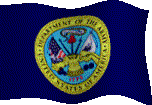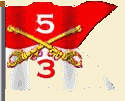Charlie Horse History Forward
10 July 1971
The last 500 1/5th men departed Charlie 2. The 1/61st Mech was the primary unit on C-2. About 50 Americans remained on C-2 and A-4 to man the heavy artillery and the sensor monitoring equipment.
Personal Recollections of CPT Tom Ford:
About this time, and I don’t have a positive date, I was attending the pre-dawn tactical briefing at the 1/5th as was my duty daily as the Operations Officer. I would receive assignments from the Brigade G-3. I recall as if it were yesterday, the G-3 standing in front of the large map of the AO with his pointer tapping the vicinity of the Tri-Border area - the northwestern most corner of South Vietnam, abutting North Vietnam and the border of Laos. He had my attention and said, “Intelligence and sensor activity lead us to believe that an Anti-Aircraft Regiment is moving into this vicinity. They would be supporting a coming offensive with the arrival of a dry season if they indeed are deploying there. I want you to send a visual recon team out there today and verify that intel.” I can understand his desire for that information, but I’m confident he had no idea of the gravity of his orders to the four aircraft and crews I’d be sending. If he did understand, he would have had to be in a desperate need of that information as the mission could easily cause the loss of the entire team. As was my habit, I had attended the briefing alone and had driven a jeep around the end of the airfield runway PSP. That morning, in the predawn darkness, I paused on my return to my TOC at the approach end of the airfield, parked and smoked a cigarette trying to formulate the phraseology I’d employ in the assignment of the team I’d select to carry out this mission. In the briefing, it had been implied that an Air Force plane at altitude would be monitoring the recon and would verify the mission was executed. Returning to the Charlie Horse operations bunker, I reviewed the list of crews the Platoon Leaders had submitted the evening before. I thought, “They are all so new. Which do I send?” Realizing that I was considered an “Old Guy,” having been in country longer than most, everyone was “new” to me; I selected the team with the Scout most likely to succeed from the list submitted. 1LT Tom Bell was the choice. Now, how to tell him and the Team that would be covering him? The looks on their faces was enough to let me know they thought I’d lost whatever remained of my mind. I directed them to proceed at extreme low level by way of the “Punch Bowl” following the Pioneer Road cut in by the Engineers during LS 719, then north at the old “Emerald City” location where 3/5 Cav had dug in to defend Khe Sanh, and finally sweep over the Tri-Border area at the fastest airspeed the slowest aircraft in the Team could manage. In the event there truly was an Anti-Aircraft unit of a major size, it would be traveling by truck and the evidence of that traffic would be apparent. They were told do not linger or backtrack. Do not exit the western AO the same way you entered. Come out down the Ca Lu River drainage. That was the best plan I could think of. I had no idea what I’d do in the event anyone went down in the Tri-Border area. I held all other teams on the flight line until that “first light” team was clearly back over the “Backyard.” Tom Bell reminds me every time we gather for a reunion about that mission ~ and I hope he does so until last we meet.
Aug 12th
New level of NVA sophistication was demonstrated when a suspected Strella SA-7 was employed against a Charlie Horse team working a visual recon just south of the DMZ near FSB A-3. UH-1H #67-17791 crashed at grid XD073672. The UH-1 with a four-man crew and four-man ARPS squad, exploded approximately 5000ft AGL with wreckage and bodies scattered over a wide area fringing on the DMZ. The team leader, CWO Mack Cockerell, along with the CPT Joe Hogg in a COBRA and the LOH with LT Brian Roth, were able to do a low-level survey of the wreckage and assured CH Operations that there were no survivors. The Team Leader was CW2 Mack Cocherell in a Cobra. CPT Joe Hogg was in the second Cobra. 1LT Brian Roth was the Scout and was able to do a low-level survey of the wreckage and assured CH Operations that there were no survivors.
Personal Recollections of 1LT Brian Roth:
Our recon mission that day was just south of the DMZ near FSB A-3. I flew the Scout ship low to the ground. The terrain that day was mostly a flat, grass covered plain with some low shrubs. There were plenty of bomb and artillery craters all around with only an occasional tree. Our tactics at that time had a ‘low gun’ flying a few hundred feet above the Scout in a rather tight orbit. The goal here was for this Cobra to have a good view of the area the Scout was working and to be able to put effective fire quickly on any position that might engage the Scout. Yes, his firing run would be short, but it would be delivered quickly and, hopefully, right on the enemy. The Team Leader flew the second Cobra, or ‘high gun,’ in a wider orbit a few hundred feet above the ‘low’ Cobra. The goal here had this gun-ship in position for a longer gun-run to cover the break of the low Cobra as he pulled off the target. The chase Huey flew above the Cobras, at about 1,500 to 2,000 feet, in a much wider orbit. Looking back, it is possible that CW2 Kelly let the Huey’s orbit “drift” over the DMZ itself. Now my feelings after all these years are that there were eight men in that Huey. I recall some chatter about the time the Team launched that one of the Infantry men did not get on the Huey which normally carried five Blues from the ARP. Thus, I would have guessed there was a crew of four plus four Blues. Then I remembered that I had a copy of the Memorial Program. It clearly shows only seven Charlie Horse guys died that day. So, maybe two Infantry men didn’t get on that Huey when we launched?
SEE APPENDIX VII – Memorial Program Excerpt
I remember there was a bright flash in the sky. I didn’t hear the sound of an explosion. I didn’t see any AA fire, any artillery, or a missile. The Team started making radio calls. The Bagger Huey never answered. About that time, I saw the remains of the Huey falling from the sky in three main groups: the trail boom, the rotor system, and the burning fuselage by itself. I definitely remember the rest of us making certain we didn’t get hit by any of it. The rotor blades were especially scary.
I flew over to the area where the fuselage impacted. I’d guess there were bodies and pieces of debris scattered over a two-football field area. There was nothing we could do for them. When I got low on fuel, I left station and was replaced by another Team. We hovered over the high elephant grass, locating remains and directing the ARVN ground force to each site to recover the bodies. The elephant grass was so high that anyone on the ground had difficulties finding anything. That's why we hovered around so all 3 of our crew could look down in almost a 360-degree view as we blew the elephant grass around. Due to the state of the bodies and body parts, my crew dropped our gloves down to the ARVNs, so they wouldn't have to handle the bodies with bare hands. We rotated in and out till all remains were recovered. We did not have any enemy contact during that time.
Needless to say, but we (everyone in the Troop) spent lots of time talking about what caused the explosion. Because the fuselage was intact, we ruled out an internal explosion like a hand grenade. We hadn’t received anti-aircraft fire that day. We had no knowledge of any artillery from either side of the DMZ. Even a solo 122mm rocket wouldn’t have been that high. The only things we could come up with was an early use of the Strela-2 SA-7 Grail missile “officially introduced” in Quang Tri Province May 1972.

.gif)


